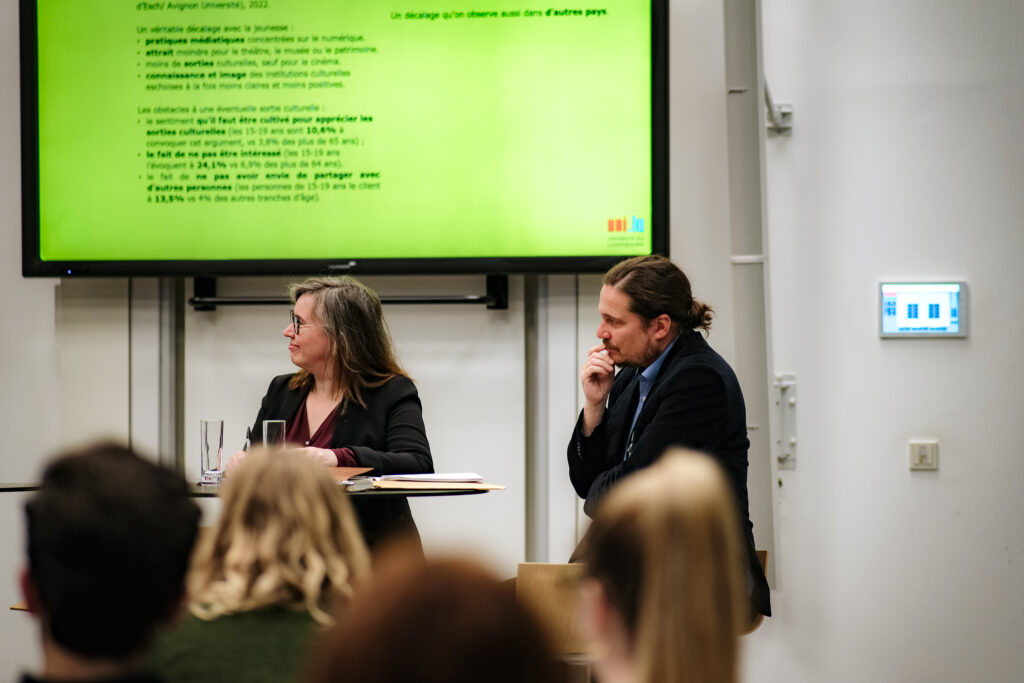Review of the interdisciplinary meetings organized by the Sommer Foundation and the Master’s program in Secondary Studies at the University of Luxembourg on March 27 and 28, 2024, on the theme of “Artistic and cultural education through the lens of artist residencies in schools and language teaching.”
The idea for this meeting emerged during a discussion on artist residencies in schools between Sandrine Guivarch, Director of the Sommer Foundation, and Tonia Raus, particularly around Ian de Toffoli’s residency, proposed by the Athénée, in which Mrs Raus is involved as the Director of the ‘French Language and Literature’ track of the Master’s in Secondary Education at the University of Luxembourg.
It seemed important to place the practices experienced in Luxembourg in perspective with initiatives undertaken in neighboring countries, through both insights from practitioners and academics.
About sixty people attended these days, including artists, teachers, representatives from cultural organizations or ministries, and students.
It was a crucial moment in the collective reflection on the place of artistic and cultural education (EAC) in Luxembourg, opening up avenues for future developments in the coming years.
The main insights from these two days are as follows:
- The confrontation of viewpoints between artists, teachers, and academics was very enlightening. The results of sociological surveys based on interviews revealed the effects of artistic and cultural education (EAC) programs on young people.
- It emerges that we need to trust young people more, as they have greater capacities for creativity, participation, and critical thinking than one might imagine. The key is to provide them with a space to express themselves, a space that should be integrated within the school framework. It is then up to the school to adapt in order to make this possible.
- The testimonials highlighted key considerations for implementing artistic and cultural education (EAC): thorough preparation of artistic interventions in the classroom, the importance of the artist-teacher partnership, teacher training in EAC, and the issue of evaluation in such initiatives.
- Experiences and studies seem to show that the duration and the disruptive dimension of the programs are crucial for an artistic project to have an impact on students. This supports the implementation of RAMS.
A detailed report outlining these two days of discussions has been prepared (FR) and can be downloaded at the bottom of the page.















